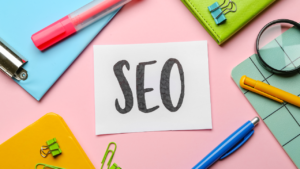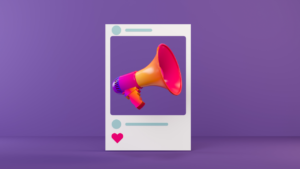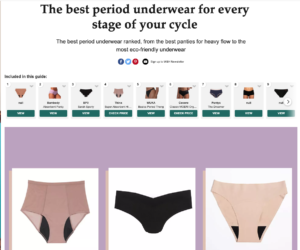Every online store wants to increase traffic and conversions, but what eCommerce strategies are the most effective at maximising sales?
When choosing an eCommerce marketing strategy for your business, it’s important to consider what products you offer and the types of customers you have. Understanding these aspects will help you create an effective plan to reach your target audience.
There’s no one size fits all approach to eCommerce marketing strategies, and you should be considerate about the strategy you decide to implement to ensure you’re doing the right thing for your business and your customers.
Here are five examples of strategies you could implement to maximise sales:
-
Digital PR
Digital PR and eCommerce go hand in hand. If you’re an online retailer, then it makes sense for your PR activity to be online too. Digital PR is a powerful tool which not only enhances your website’s SEO ranking over time but also aids in brand awareness and increasing sales. Activity includes tactics to earn backlinks to your site, which, in turn, bolsters your overall SEO strategy and performance.
Digital PR is more than just writing about products or services, writing a sales pitch, and outreaching to generic contacts; scoping out a digital PR strategy actually requires a high level of planning to ensure you’re targeting the right publications for your audience, with the right content for those publications.
The type of content you’re issuing out to journalists will largely depend on the specific pages you aim to target on your website and the publications you’re trying to reach. Tailoring your content accordingly is essential to maximise outreach success. Some of the types of pitches shared with journalists include:
Product-led content: This type of content is focused on shouting about your brand’s products, particularly if you’re about to launch a new product or heading into a peak shopping period where your product offering is relevant, such as Valentines, Easter, Black Friday or Christmas. This type of content would be shared with shopping or consumer editors who focus on ‘listicle’ type stories, where they would require high-resolution images of the product and a detailed product description. This type of activity aims to drive links to specific product pages.
An example of where we have undergone product-led pitching is for our client Iceni, a sustainable period wear brand. Standout coverage for them includes Women & Health and Stylist.
Reactive PR campaigns: Responding quickly to trending news stories and the ever-changing news agenda is a great way to generate coverage and links, particularly when a planned PR campaign is in development and outreach hasn’t begun yet.
Of course, it’s really important NOT to jump on a trend just because everyone else is. A brand needs to consider if a topic is relevant to them and if they can add anything of value to the conversation (e.g. expert commentary, date, insights) – if they can’t, we’d recommended staying away from a trend that’s not of relevant, to avoid damaging your brand’s reputation due to ‘jumping on the bandwagon’.
An example of a reactive PR campaign that worked well due to its relevancy and execution is The Kid Collective’s ‘Disney Baby Names’ PR campaign. When Love Island’s Molly-Mae Hague revealed her newborn’s name, Bambi, we quickly thought of a relevant and entertaining news story around baby names that are also characters in Disney’s most popular films. We did this by analysing ONS data to identify the most significant jump in baby names.
Molly-Mae announced her big news on the 29th of January at around 6pm, and by the following morning, we started pitching the story out to the press at 8am, after drafting a press release at record speed and receiving quick sign-off from a client. Overall, we achieved 107 pieces of coverage and 84 followed links, as well as several eCommerce metrics seeing positive increases, such as transactions (+70%) and revenue (+74%).
Planned PR campaigns: Usually, planned digital PR campaigns and mailers will make the foundations of your digital PR strategy. At Wild PR, we’ll do a deep dive into our client’s brands, media landscape, and competitors, among other tactics, to determine what PR campaigns and mailers we recommend. Generally, these types of campaigns will require in-depth desk research (e.g. undergoing a survey, FOI, or data analysis) with accompanying creative assets. These types of campaigns would aim to drive traffic towards the campaign’s landing page (or supporting blog).
-
SEO
Leading on from Digital PR is search engine optimisation (SEO), an eCommerce strategy that helps online retailers rank high in the search engine results pages (SERPs). At Wild, it’s essential that all of our PR campaigns are SEO driven; the two streams of activity go hand in hand. A well-designed and optimised website with good user experience (UX) with high-quality content will rank better in engines like Google, increasing your business’s website visibility and driving good-quality traffic.
However, for eCommerce websites, it’s not just SEO-friendly content that needs to be considered. By considering Google’s guidelines and what they reward, brands should work through some of the following:
– Perform keyword research considering long-tail keywords
– Optimise product pages (such as updating product descriptions, images, and feature reviews)
– Ensure the site is user-friendly, considering factors such as Largest Contentful Pain (LCP), Cumulative Layout Shift (CLS), and First Input Delay (FID)
– Consider a simple URL structure
– Avoid duplicate pages and content
– Add a site map
– Use scheme markups to help Google and users understand the content

-
Email campaigns
Developing an email list and sharing compelling campaigns with your target audience is a great way to retain website traffic and turn new visitors into returning ones. Email marketing lets you build ongoing customer relationships and effectively drives sales.
For eCommerce businesses, setting up automated email campaigns would be a good idea. This works really well for sharing transactional, promotional and lifecycle emails. For example, a transactional email would include information such as order confirmations and delivery updates, promotional emails would focus on new products and time-sensitive deals, and lifecycle emails would refer to prompts like shopping cart abandonment or ‘you may also like’ messaging.

Social media
If you have an online business, ensuring you have a social media strategy in place is essential. Posting across social media channels can increase brand awareness, allow brands to develop strong relationships with customers, and help brands keep up to date with the market they reside in.
As well as generating brand awareness and connecting with customers, brands can now sell directly through social media platforms. Currently, four social media apps have social selling capabilities, including:
– TikTok
This is where social media eCommerce marketing overlaps with social commerce. The two main benefits of social commerce solutions are that it’s free to set up and creates a streamlined sales process.

-
PPC advertising
PPC (pay-per-click) advertising can be a really effective way to drive targeted traffic to a website and is a good method to invest in in the short term. However, if you want to enhance your business’s online presence in the long run, SEO and Digital PR are the answer.
However, some benefits of PPC advertising include:
– Cost-effective – With PPC, you can spend as much or as little as you’d like, and you only pay when someone clicks on your ad.
– Targetted – You can be really specific with your targeting when it comes to PPC advertising. For example, you can narrow down your audience according to their demographics, such as location, language, and device.
– Measurable – PPC provides some good tracking and measurement metrics, such as impressions, clicks, and conversions, and they can be defined depending on a business’s specific goals.
– Customisable – It’s really easy to customise your ads, even when they’re live. It’s recommended to monitor a live ad’s performance to make small adjustments if improvement is required.
– Fast – It’s possible that PPC results can be achieved relatively quickly; however, unlike SEO and digital PR, PPC is not sustainable because it relies on continuous investment to maintain the campaign.

What marketing tactic is best for your online business?
A successful eCommerce business thrives on effective strategies that drive sales and boost brand visibility. In the ever-evolving digital landscape, it’s evident that investing in digital PR and SEO can significantly impact your online store’s growth and success.
Digital PR is crucial in building a strong online presence by securing media coverage and backlinks from reputable sources. By strategically leveraging these opportunities, an eCommerce business can establish credibility and trust among its target audience, increasing website traffic and improving search engine rankings.
SEO, on the other hand, is the foundation of long-term success in the eCommerce world. Optimising your website for search engines enables your products to be easily discoverable by potential customers searching for relevant keywords. By consistently implementing SEO best practices, you can enhance your site’s visibility in search results, driving organic traffic and reducing the dependency on PPC advertising.
While email campaigns, social media, and PPC advertising play significant roles in driving sales, digital PR and SEO offer sustainable benefits that continue to yield results over time. Ultimately, combining an SEO-driven digital PR strategy with other marketing tactics will position your business for long-term growth and success in the competitive online marketplace.
To discuss more about how digital PR can help you achieve your eCommerce ambitions, get in touch here: https://wild-pr.co.uk/get-in-touch/



